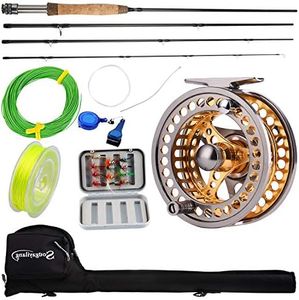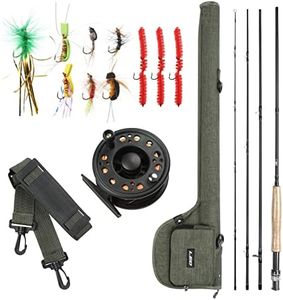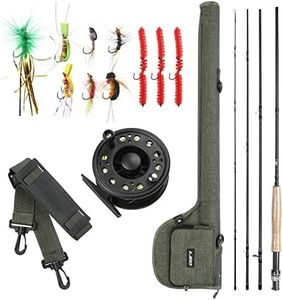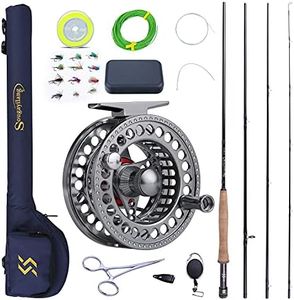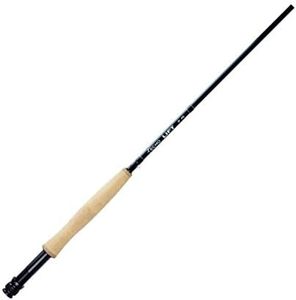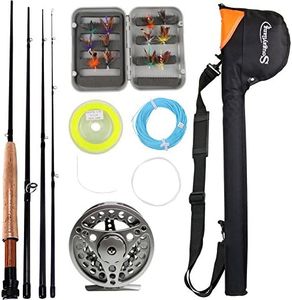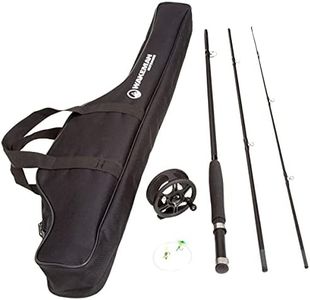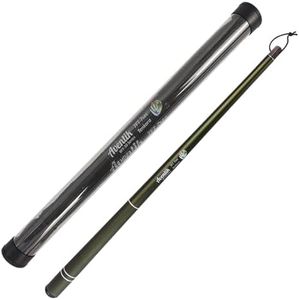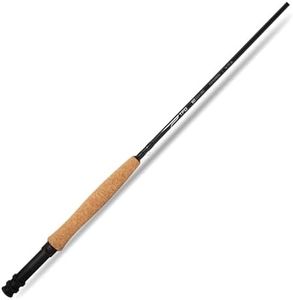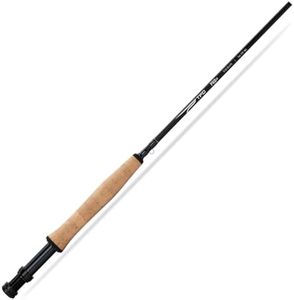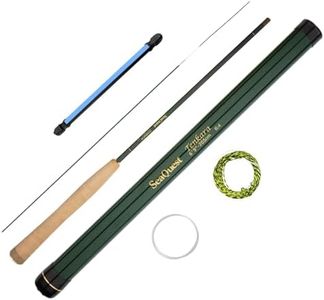We Use CookiesWe use cookies to enhance the security, performance,
functionality and for analytical and promotional activities. By continuing to browse this site you
are agreeing to our privacy policy
10 Best Beginner Fly Rods
From leading brands and best sellers available on the web.Recommended lists
Buying Guide for the Best Beginner Fly Rods
Choosing your first fly rod as a beginner can feel overwhelming, but focusing on how and where you plan to fish will help you make the right choice. Fly rods vary in length, weight, action, and material. Each of these features contributes to how the rod will feel in your hand, the types of fish it’s best for, and the ease of casting. Understanding these main characteristics will help you match a rod to your fishing ambitions and local waters, making your learning process more enjoyable and successful.Rod LengthRod length refers to how long the rod is from end to end, usually measured in feet. This matters because it affects casting distance, control, and maneuverability. Shorter rods—typically under 8 feet—are easier to handle in tight spaces like small creeks with lots of overhanging trees. Longer rods—around 9 feet or more—allow for longer casts and better line control on bigger rivers or lakes. As a beginner, consider where you’ll fish most often: tight, wooded streams call for shorter rods, while open water or situations needing longer casts are best served with longer rods.
Rod WeightRod weight is a number (like 4-weight or 5-weight) that indicates the size of fly line the rod is designed to cast, not the rod’s physical weight. This is crucial because it matches the rod’s strength to the size of the fish and flies you’ll be using. Lower weights—between 2 and 4—are good for small fish in gentle waters. Mid-range weights—like a 5 or 6—are versatile for beginners and can handle trout in most streams and rivers. Higher weights—7 and above—are for bigger fish or windy conditions. Match the rod’s weight to your target fish type and environment for best results.
Rod ActionRod action describes how much and where a rod bends when casting. Slow action rods bend more and feel softer, making gentle presentations and short, accurate casts. Fast action rods bend mostly at the tip and are stiffer, which helps cast farther and handle wind, but require better timing. Medium action rods strike a balance with moderate flex and versatility. Beginners often find medium action rods easier to learn with because they’re forgiving and suitable for a variety of situations, making them a great starting point.
Rod MaterialMaterials affect durability, weight, and feel. Most modern fly rods use graphite, which is light, strong, and provides good sensitivity. Other options like fiberglass offer more flexibility and a slower action, which can be fun for smaller fish but may not be as versatile. Bamboo rods are classic and beautiful, but require more maintenance and are usually for enthusiasts. As a beginner, graphite is the most practical choice for its combination of performance, lightness, and ease of use.
Rod PiecesThe number of pieces refers to how many sections the rod breaks down into. Two-piece rods are simple and may be slightly smoother in action, but four-piece rods are more popular because they are easier to transport and store. Modern multi-piece rods fit together well and don’t sacrifice much performance. If you expect to travel or hike to fishing spots, a rod with more pieces will be more convenient, while a two-piece is fine if you’re always near your car.
